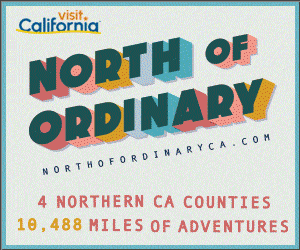LavA Beds National Monument
100 Years Young
Story & Photos by Lee Juillerat
At a first glance the landscape appears desolate, impenetrable, and intimidating. But the appropriately named Lava Beds National Monument is also a place for above and below ground exploration and remembering history.
Part of the history dates back more than 450,000 years, when geologists believe lava flows spread across and blanketed the land. The area’s human history includes ancient petroglyphs carved by Native Americans and, more recently, the Modoc War of 1872-73, when Modoc Indians used a natural geologic fortress to fight off Army troops for five months before eventually being defeated.
Another part of Lava Beds history dates back nearly 100 years to November 21, 1925, when efforts to preserve the region’s unique features, led by J.D. “Judd” Howard, resulted in the designation of Lava Beds National Monument. As the doggedly persistent Howard wrote in 1923, “This is the last of Park sites in the States, and is far Superior to all the others …”
Howard’s claims might be disputed, but a century later Lava Beds remains a place of fascination and exploration. Located just south of the Oregon-California border and 45 miles south of Klamath Falls, the park covers more than 46,000 acres. It’s best known for its array of more than 800 lava tube caves, with only 27 having marked entrances. Some cave paths are high and wide enough to stand in, but most require squirming and crawling. Only one cave, Mushpot, has artificial lights. Visitors are encouraged to bring their own flashlights, which can also be borrowed at the park visitor center. After exploring with lanterns and naming many of those caves, Howard led a several years’ effort to protect the area, earning him the title as the “Father of Lava Beds.”
But as Lava Beds reaches its 100th anniversary, how it will be celebrated is uncertain. The Lava Beds Visitor Center has T-shirts, mugs, and other merchandise commemorating the park’s century, along with books chronicling aspects of Lava Beds history and geology. But funding cutbacks to the National Park Service and the resulting staffing shortages have stifled plans for anniversary programs originally planned this late summer and fall.
The uncertainty won’t stop people like Cheewa James, a Modoc descendant, who for several summers was a seasonal interpretive ranger and is the author of Modoc: The Tribe That Wouldn’t Die and The Modoc War: Heartbreak of a Homeland Lost. James, the great-granddaughter of the Modoc War warrior known as Shacknasty Jim, will tell her stories during programs at the Lava Beds and for audiences at regional museums.
Many stories can be told about Lava Beds, including several of my own. As a reporter for the Klamath Falls Herald and News, my expansive coverage area included Lava Beds. For more than a half-century I’ve hiked places where Cheewa’s relatives lived before and after the war.
Overnight backpacks include camping on a butte where the dark night’s silence was eerily brightened by the echoes of howling coyotes. Explorations included being lowered on a rope into a cave once used by moonshiners. Several times I visited Crystal Cave, where ceiling to floor formations of ice stand like guardians to a seldom-seen world.
There are memories of seeing browsing California bighorn sheep and galloping pronghorn antelope. And, with others, wondering about the meaning of petroglyphs carved on rock walls.
But my most impacting memory is a late night after a day of cave crawling with Mac Heebner, a park ranger, who decades later remains a friend. I had been recruited to write a brochure, Captain Jack’s Stronghold Historic Trail. For several weekends, my family and I stayed in an unoccupied park housing unit. It was near midnight while in the park library reading through journals written by Howard, formally Judson Dean Howard. Tired and losing focus, I was flipping through pages when something prompted me to take a second look. When I did my fatigue was awakened. Atop a letter from Howard was his address, my address! The house that is mine was his.
I later listened to tape recordings of a gruff-voiced old man. I also learned that Howard had died on December 15, 1961, at age 81. On that day, a Lava Beds park ranger was at Howard’s home. According a story told to Bob Rock, Howard’s close friend, while talking with the ranger “Judd sat down, looked at him [the ranger], said, ‘I don’t feel so good,’ and he was dead.”
It wasn’t until 1994 that Howard was officially memorialized as “The Father of Lava Beds.” A brass plaque bought by friends honoring Howard was embedded on a rock across from the entrance to Mushpot Cave.
“It’s about 45 years overdue,” Rock, who had befriended Howard in 1949 and served as his executor, told me. “It’s too bad this didn’t happen before he died. If it was up to me, it would be the J.D. Howard Lava Beds National Monument because if it wasn’t for him this,” he said, his eyes spanning the surrounding area, “this wouldn’t be here.”
As Lava Beds National Monument quietly reaches its 100th anniversary, there are many people with many stories to be told.
Check the National Parks website, www.nps.gov for information and directions














